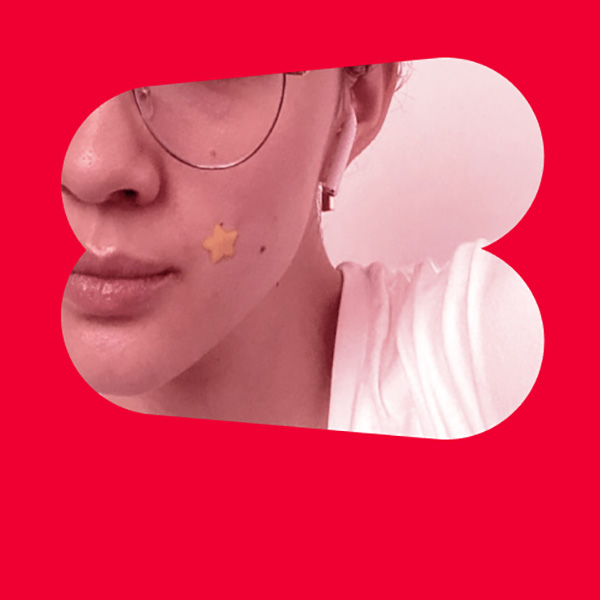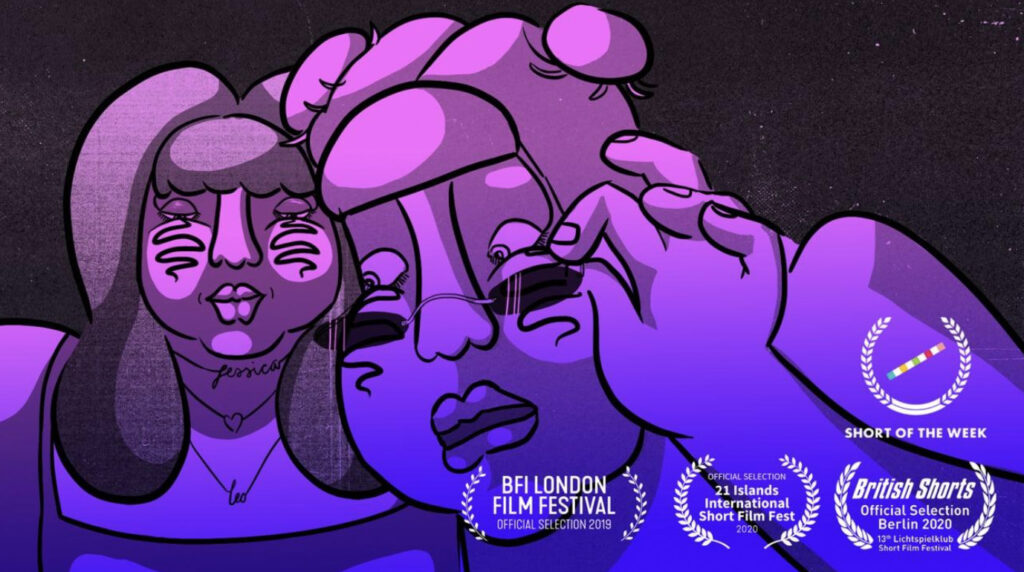Beyond the Beauty Myth
Published
October 27, 2023
By
Tracey

Image credit: @baydoucet
The first time I saw an influencer go about her day with bright yellow, star-shaped pimple patches, I felt a deep sense of consolation. Here was a young woman comfortable in her own skin, drawing attention to the fact of her breakouts, and even having fun with it.
Such instances have become beacons of possibility for me, affirmations that we can cultivate new attitudes, and untether ourselves from the beauty myth. They’re especially vital because it’s so hard to counter the overwhelming force of beauty standards, and their insidious permutations.
Women can understand how the beauty myth works, yet we continue organising our lives around practices we find totally ridiculous.
This split consciousness is brilliantly expressed by Caitlin Young, in her short film, Breast Friends.

As this relatable animation reveals, awareness of our harmful beauty culture doesn’t stave off the self-loathing that same culture breeds. We can’t rationalise our way into self-love. Realistically, preaching body positivity won’t undo years of gender conditioning overnight, or immediately dispel deeply entrenched feelings of insecurity and inadequacy about our bodies.
But for those still struggling with society’s punitive beauty ideal, where does that leave us?
Making peace with our bodies
In place of body positivity, an alternative movement of body neutrality has been gaining momentum. It aims not at skipping past negative feelings like shame and disappointment towards our perceived physical flaws, but at recognizing that such emotions can and do surface at times. We don’t have to feel good about our bodies all the time.
Seeing the body as a vessel for carrying us through life, body neutrality nudges us away from the pursuit of aesthetic perfection while also removing the pressure to constantly celebrate our external appearance.
The emphasis falls instead on how our bodies serve us, and how we can, in turn, support our bodies and listen to our changing needs without judgment. Staying attuned to what helps us feel energised or comforted, we might give our bodies what it seeks—whether that’s an evening jog, or an extra slice of chocolate cake.
Where relentless body positivity might seem daunting, body neutrality signals a shift from unconditional self-love to a more nuanced version of self-compassion. It suggests the possibility that we can care for our bodies in ways that de-emphasise beauty.
Rethinking social feeds
But paying attention to the needs of the body is a genuinely complex business. How would we go about separating which of our urges spring authentically from the self and which are sold to us by society?
One strategy might be to actively unlearn old, unhelpful modes of thought, and slowly habituate ourselves to alternative ways of thinking. That’s the emotional work of a lifetime, but I’m encouraged by examples of women who have exercised patience and trust in the process. Like comedian and activist Lindy West, who recounts her discovery of a blog featuring fat women:
"They were like medicine. One by one they loosened my knots.
First, I stopped reacting with knee-jerk embarrassment at the brazenness of their bodies, the way I’d been trained. I stopped feeling obscene, exposed, like someone had ripped the veil off my worst secrets.
Next, they became ordinary. Mundane. Neutral. Their thick thighs and sagging bellies were just bodies, like any other. Their lives were just lives, like any other. Like mine.
Then one day, they were beautiful. I wanted to look and be like them—I wanted to spill out of a crop top; plant a flag in a mountain of lingeries; alienate small, bitter men who dared to presume that women exist for their consumption; lay bare the cowardice in recoiling at something as literally fundamental as a woman’s real body. I wasn’t unnatural after all; the cultural attitude that taught me so was the real abomination. My body, I realised, was an opportunity. It was political. It moved the world just by existing. What a gift."
- Lindy West, Shrill.
The process is gradual, simultaneously discomfiting and liberating. We can actively seek out images of physical features and body types that don’t conform to the beauty idea. While Instagram’s algorithmic bias continues to platform certain bodies over others, and TikTok virality propels our beauty obsession, we can opt to follow profiles that show diverse body shapes, sizes, ethnicities and disabilities.
Filling our feeds with images of real skin and real bodies can be an antidote. One study shows that such ‘micro-interventions’ have tangible effect, improving body image in young women and reducing comparison with other peers. This kind of purposeful curation is powerful, returning us to the gloriously messy, imperfect reality of human bodies.
Interrogating beauty culture
Common to both body neutrality and micro-interventions is the idea that aesthetic conformity doesn’t need to be the at the centre of our lives.
Mia Mingus, a disability justice advocate, challenges the very basis of beauty’s significance in our society. The concept of beauty is premised on exclusivity and discrimination; beauty culture operates by casting our bodies as instruments that can be moulded into plastic perfection, and privileging those that come closer to the physical ideal.
While efforts to broaden the definition of beauty are well-intentioned, they inadvertently reinforce the idea that bodies are aesthetic objects. Beauty may not be something we want to reclaim at all. “We must move towards the ugly,” Mingus argues. “Not just the ugly in ourselves, but the people and communities that are ugly, undesirable, unwanted, disposable, hidden, displaced.”
If we no longer see the body as an instrument to be regulated or a form to be admired, we might see our bodies as potential sites of resistance and healing. We might subvert social structures we didn’t choose, and decide for ourselves how we want to experience womanhood. We might explore more liberatory ways of existing in our bodies—starting from something as tiny, and as spectacular, as a star-shaped pimple patch.

